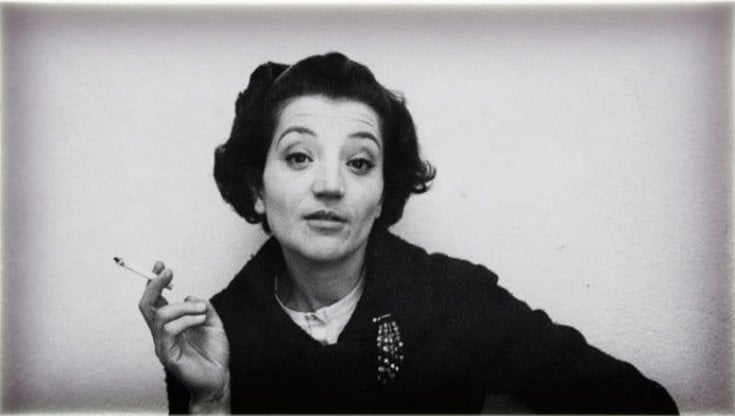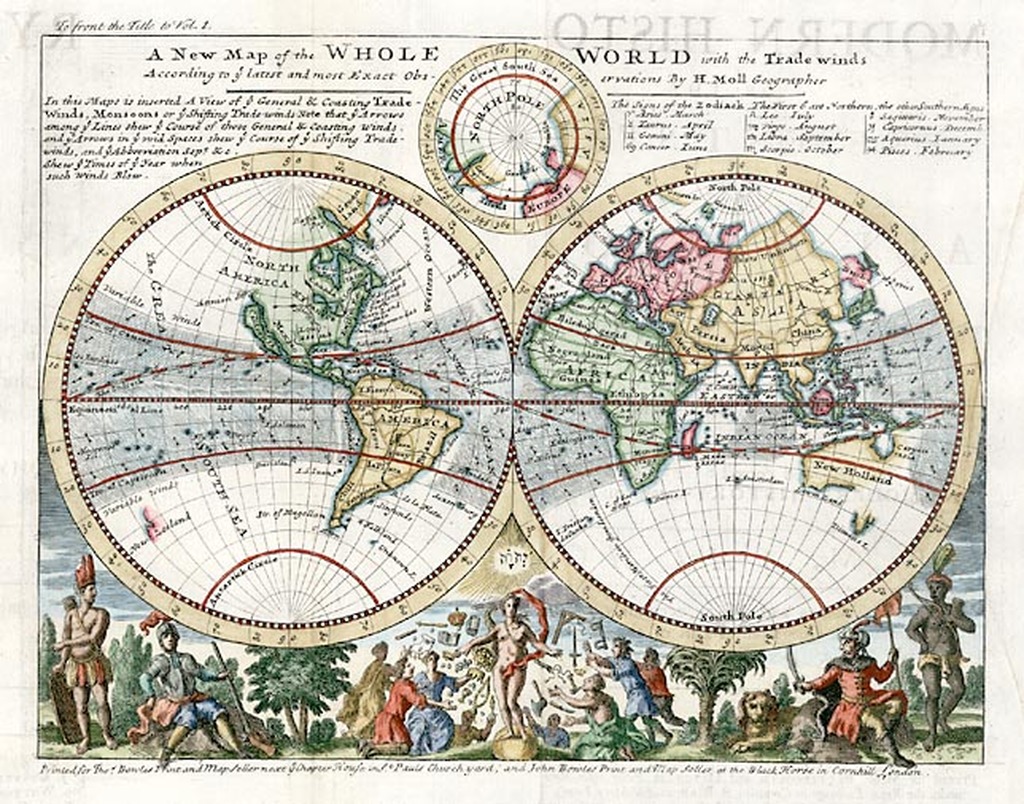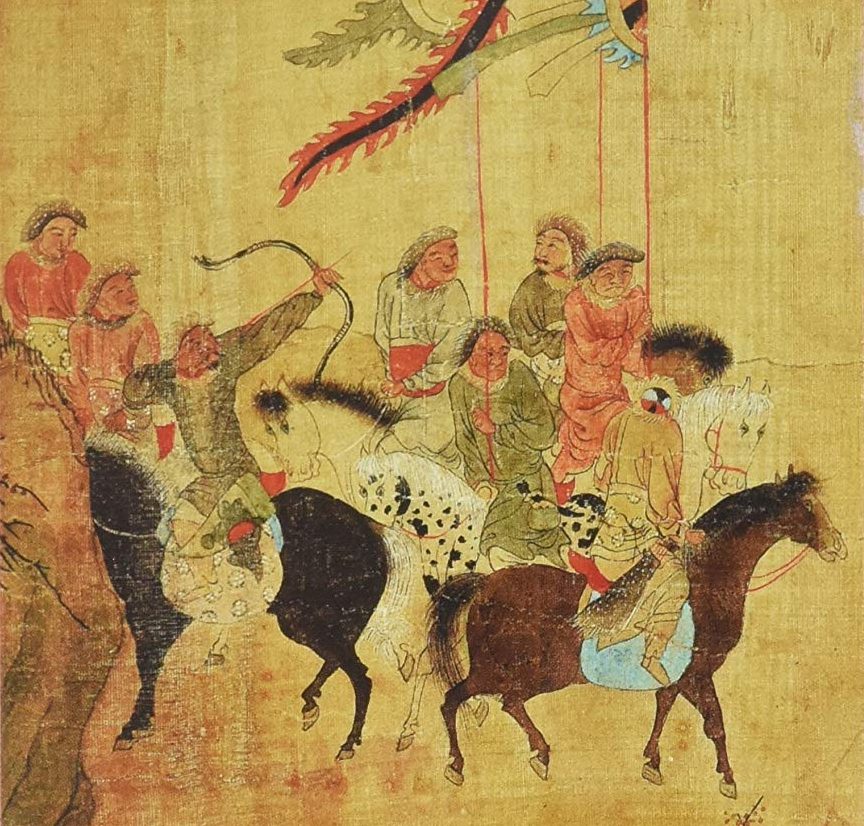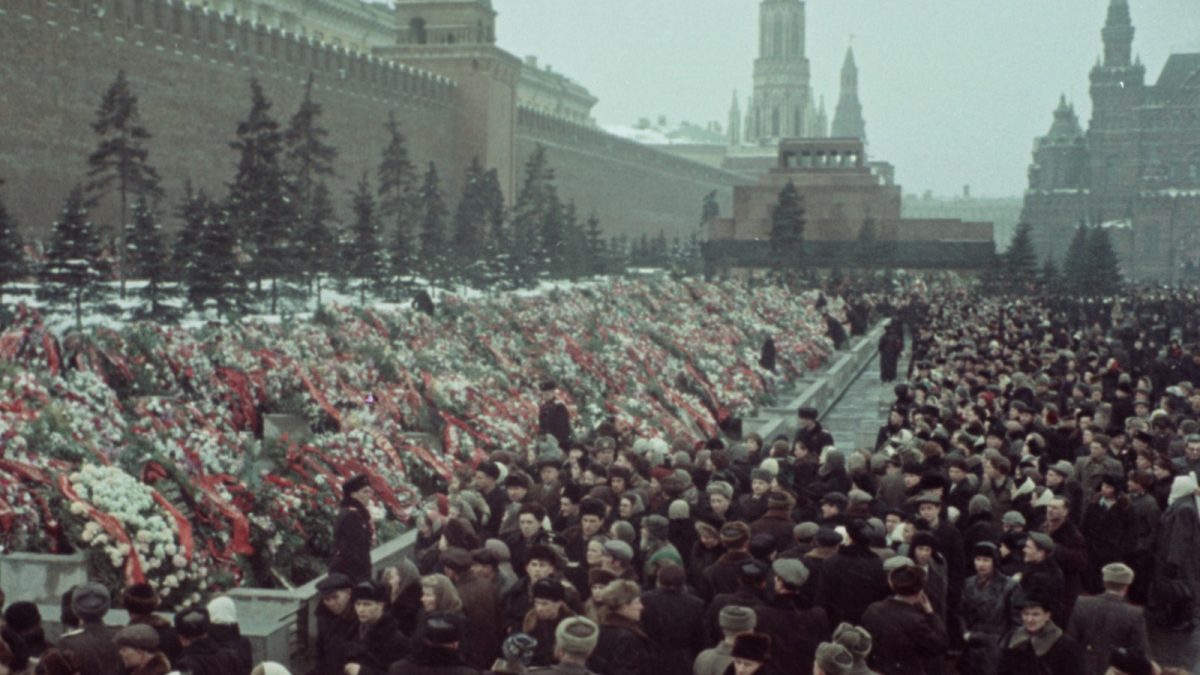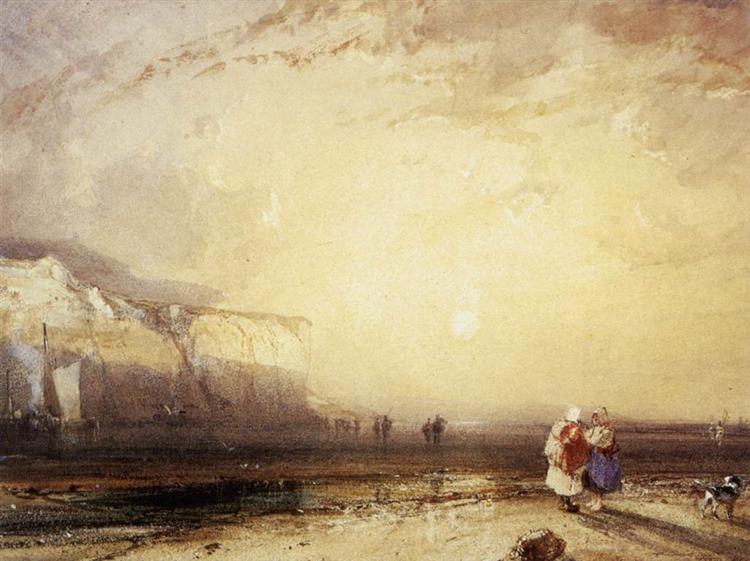Cecilia Mangini, who died on 21 January this year, is widely credited as Italy’s first female documentary filmmaker, though she was also a photographer, critic and activist. Her career, which spanned over six decades, followed a sinuous path. Born in the Southern region of Puglia in 1927, Mangini moved to Florence at the age of six after her father’s leather business collapsed. She studied political science at the University of Florence and upon graduating took up a secretarial role at the Italian Federation of Independent Cinema in Rome, where she began writing film reviews for Cinema Nuovo, Cinema ’60 and L’Eco del Cinema. From there she turned her hand to documentary filmmaking – an arena in which she was critically acclaimed, if never famed.
Living through the fascist era and the Years of Lead, Mangini’s turbulent historical context shaped the political impulses – primarily Marxist and feminist – which unite her eclectic body of work, pulsating through her studies of the Vietnam War, the life of Antonio Gramsci, the rise of the European far-right and the traditional shamanic practices in Apulia. Paradoxically, though not unusually, Mangini’s first forays into filmmaking were via the ‘Cineguf’ group: a fascist student film club attended by a number of leftist avant-garde directors – including Pier Paolo Pasolini and Antonio Ghirelli – in the early stages of their career. Like them, Mangini quickly shrugged off her reactionary affiliations, working with Pasolini and Lino Del Fra (the Roman director whom she would later marry) on several militant cinematic treatments of postbellum Italy. These included Ignoti Alla Città (Unknown to the City, 1958), a blistering commentary on the disenfranchisement of young working-class men, and All’Armi Siam Fascisti! (To Arms, We Are Fascists!) a 1962 archive compilation reflecting on the privations that led to Italian fascism, WWII and its aftermath.
These collaborations paved the way for Mangini’s work with the Italian Communist Party, under whose auspices she produced Essere Donne (Being Women), a 28-minute documentary commissioned by the Communist-aligned production company Unitelefilm as part of the 1965 election campaign. Essere Donne begins quite unlike any of Mangini’s previous work, with a hallucinatory montage sequence that unfurls at dizzying pace. A lurid pink elephant is flanked by a model clad in ostrich feathers and a Maidenform bra. The camera moves contemplatively over this image while cutting back and forth to clips of exploding atom bombs, which then give way to a series of disjointed close-ups. Magazine photos of lips, hands, feet, hair and eyes appear to fracture the female body into discrete, commodified parts. The unsettlingly hypnotic quality of the sequence is amplified by its accompanying score, the dissonant clanging of machines overlaid with an accelerated rendition of Brecht and Weill’s ‘Alabama Song’, whose lyrics desperately bewail: ‘If we don’t find the next whisky bar, I tell you we must die’. A male narrator, speaking in sparse, formal Italian, asks of the glossy advertisements:
Who can recognise herself in these images? Not the six million women who work in production in Italy. Not the millions of women who stay at home, bound by domestic labour. Not these 14- or 15-year-old girls who work in a pasta factory in Apulia.
With that, the prologue’s tension is undercut by a humdrum scene of Italian factory workers, edited so that a fragmentary shot of a male boss monitoring a female employee is continually replayed, as if to mimic the monotony of the assembly-line. Gramsci’s analysis of Fordism is thus translated into the visual language of the avant-garde, while the vivid colour of the opening is abandoned in favour of a saturated monochrome – draining the affect from the images. The camera pans down the leg of a young factory-worker, whose scarred calf forms a striking contrast with the airbrushed limbs of the previous scene. An elderly woman is shown stitching a bra not unlike that featured in the Maidenform advertisement. She speaks in regional dialect, telling us: ‘I make 100 lire from each of these bras; the store sells them for 1,500 lire each.’
Essere Donne is not Mangini’s best-known documentary, but it is among her most accomplished – its fusion of political propaganda, cinematic experimentation and juxtaposition of rural and urban cultures typifying her trademark style. Its power derives from her ability to weave different aesthetic practices and cinematic threads into a rich fabric that mimics her subject matter: the garment trade. Her thesis – that post-war capitalist expansion has crippled Italian workers – is not stated explicitly, but rather given striking visual form. The disruptive effects of rapid industrialization are highlighted through sensitive visions of the landscape which reflect Italy’s North–South divide. A looming shot of Milan’s Pirelli Tower, the administrative centre of the Pirelli tyre automobile corporation, is contrasted with the undulating Apulian hills. Machine noises are set against the plaintive lyricism of Southern folk song. While a woman works the fields of a Southern olive plantation, a factory tower rises ominously behind her, and the narrator informs us that ‘now industry has sprung up even in the olive groves of the South … every day that breaks over the skyscrapers, as over the houses of peasants and farmhands in the South, begins in the holy name of monopoly capital.’
Mangini had a lifelong interest in the effect of industrialization on Italy’s female population. Drawing on her childhood experience, as well as her conversations with other working-class women in Rome and Florence, she believed that rural women lured to the city by hopes of economic emancipation would find themselves ensnared in the strictures of urban capital. This bleak outlook finds its way into Essere Donne, which unflinchingly confronts the material impediments to women’s independence. Her portrayal of individual female subjects often overflows with humanity and empathy. ‘Still my husband cannot get a steady job’, laments an Italian mother, reflecting on her move from the countryside to Milan. ‘And to support the family, I have to go to the factory. So Rosetta, who is the eldest, must look after the little ones. She has to miss school.’ This testimony is accompanied by a sequence of the mother and daughter climbing the polluted stairwell that leads out from their basement. The mother, setting off for work, closes a fence on her daughter who, in the absence of her parent, clings to its metal wire. These tender moments recur throughout Essere Donne, showcasing Mangini’s ability to fuse polemical opposition to the Italian post-war settlement with a persistently humane and dignified portrayal of her interviewees.
The mainstay of Essere Donne is the contemporary economic situation in Italy, but there are also glancing allusions to world politics. These are mostly explored in its epilogue: a montage comprising press footage of anti-NATO protests and women’s marches, interspliced with moving images of nuclear weapons testing. The opening scene’s references to the atom bomb thereby come full circle, with Mangini implicitly suggesting that – despite the film’s lingering landscape shots, which appear to focus its critique on Italian class dynamics – the plight of female labourers cannot be reduced to a national issue. It is rather bound up with Cold War power relations. With this change in perspective, the situation of Italian women comes to metonymize a broader condition. Their mutilation by machine work stands for our collective precarity before NATO’s nuclear death machines. The expansion of capital into Italy’s semi-feudal pockets mirrors its forcible extension into Southeast Asia, Latin America and Indochina – accompanied by American warplanes.
Partly because of this closing sequence, Essere Donne was deemed too radical for Italian cinemas, which at the time were still regulated by the government’s ‘Obligatory Programming’ legislation. Its distribution was consequently limited: an issue only partially remedied by the Communist Party’s decision to take matters into its own hands by screening it in regional Communist Clubs. The suppression of Essere Donne was defended not on political but aesthetic grounds, with censors citing its failure to meet the minimum ‘technical, artistic and cultural requisites’ set by the ministerial committee. (The judges at the 1965 international film festival in Leipzig begged to differ, awarding Essere Donne the prestigious Special Jury Prize.)
Mangini’s mobilization of different aesthetic forms – semiotics, montage, stock footage and aural motifs – anticipated developments in British cinema that would not take hold until the 1970s. One can draw an easy comparison between Essere Donne and The Song of the Shirt, Sue Clayton’s and Jonathan Curling’s seminal 1979 documentary about female garment workers in London – which similarly interweaves disparate narratives, temporalities and screen effects. Perhaps the earliest and most influential text on film semiotics to be translated into English was Pasolini’s ‘Discourse on the Shot Sequence, or the Cinema as the Semiology of Reality’, which appeared in a 1969 edition of Cinim, and articulated many of the stylistic precepts which were forged in his collaborations with Mangini. As the British New Wave petered out amid the decline of 60s counterculture, this cinematic language – imported from the European left – became increasingly important for the avant-garde theorists and practitioners clustered around Screen magazine and the British Film Institute.
By contrast, Mangini’s domestic influence was somewhat limited. She was not just a woman in a man’s world, but the only woman in it. Twentieth-century Italian cinema was a firmly patriarchal industry, and though Mangini’s career was in a sense launched by Pasolini – whom she said provided a ‘springboard’ for her own productions – she was also eclipsed by his stardom. Pasolini’s cinematic theories acquired canonical status for later generations of filmmakers, while the audience for Mangini’s critical essays remained relatively small. Her documentaries also garnered little commercial success, relying instead on public subsidies and monetary awards. The funding to support such experimental ventures during the 1950s and 60s dried up in the 70s, an era that marked a qualitative decline in Italian cinema and a drop-off in Mangini’s previously prolific output. Already suffering under serious financial strain, she was dealt a further blow when Pasolini was murdered in 1975. Her career – still enmeshed with his – came to a temporary but significant halt, and she began to fade from public memory.
Although Mangini continued to produce powerful, socially conscious films, she did so at a reduced rate and in a comparatively conventional style. She became a sporadic screenwriter, working on more marketable projects such as La Villeggiatura (Black Holiday), a 1973 drama which explores the life of a conflicted history professor who, having been exiled to the provinces for refusing to pledge allegiance to Mussolini, begins to question his political commitments and the value of resistance. Developing on this theme, in 1974 Mangini directed La Briglia sul Collo (The Bridle on the Neck), which documents the attempts of the post-fascist Italian state to integrate perceived ‘misfits’ into mainstream society, focusing on the relationship between a seven-year-old village boy and the local school system. Towards the end of the decade Mangini co-wrote the script for Del Fra’s acclaimed biopic of Gramsci, set during the leader’s prison days, with flashbacks to the founding of the CPI and street-fights with the far-right. Whereas Pasolini’s later works retreated into fantasy and epic, Mangini’s marked something of a return to the neorealist tradition – yet with a strident political commitment that distinguished her from influences like Rossellini and De Sica.
Her final film was released in 2020, after she accidentally came across a series of pictures from her 1965 visit to Vietnam tucked away in two neglected shoeboxes. Mangini and Del Fra had travelled there with the hope of producing a documentary to aid the North Vietnamese cause, yet they were ordered to return home by the revolutionary forces and soon abandoned their project. Upon finding the images again, Mangini interwove them in her classic style to make Due Scatole Dimenticate (Two Forgotten Boxes), a reflective study not only of the Vietnam War, but also of her life in filmmaking, her innovative practice, and how the world had changed during the near century she spent on it.
Read on: Emilie Bickerton on the contours of new working-class cinema.
